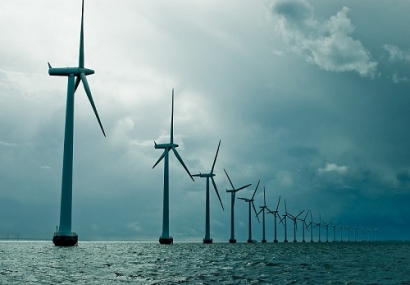
Floating offshore wind has the potential to enable development in high-wind zones where the sea is too deep for fixed foundations. Currently the largest floating offshore wind project has a capacity of 30MW, but organized infrastructure planning will be vital to accommodate bigger projects and allow the floating offshore wind industry to reach commercial viability.
In order to accommodate the quay-side construction of a large-scale floating wind farm, a port must meet various criteria. For a start, it will require a suitably large onshore area for component set-down and production lines. An area for wet storage of assembled units will also be needed and the port should be close to other operation-capable ports.
However, LOC’s research revealed that existing port infrastructure is largely insufficient: of 96 European ports analyzed, only a few in Scotland, Norway and Spain were suitable for the development and operation of floating offshore wind farms.
Without a plan to develop a network of appropriate ports, the lack of suitable infrastructure for commercial floating offshore wind farms will lead projects to suffer from increased costs and longer operational lead times. If an assembly port is further from the wind farm site, for example, long and costly tow operations will be necessary.
In terms of vessels and equipment, the report further concluded that current installation and support vessels used for fixed foundation wind farms are likely to prove insufficient, and new ones will be needed to meet the demands of floating offshore projects. In particular, if construction is to be carried out offshore, the industry will need to invest in new vessels with greater lifting capacity.
In the fixed offshore industry, specialized vessels lead to more cost-effective operation and maintenance. Comparable developments could help the floating wind industry overcome infrastructure challenges: limited port space is less of an issue if better towing systems are developed that are capable of bringing over components from nearby port assembly sites.
“By highlighting the infrastructure challenges facing floating wind we are enabling them to be tackled head-on,” said Dr. RV Ahilan, joint CEO of LOC Group.
“As the industry develops the necessary technologies to make floating offshore wind commercially viable, there is an urgent need for investment in port infrastructure to avoid delays in the deployment of large-scale floating offshore wind farms.”
Captain Mike Frampton, co-author of the study, will be presenting LOC Renewable’s findings at WindEurope Hamburg, on Friday September 28, 2018. He will be speaking during the Floating Offshore Wind - Supply Chain Perspectives session. LOC Renewables executives will also be attending WindEurope, and can be found on stand 304 in Hall B4.EG during the week.

